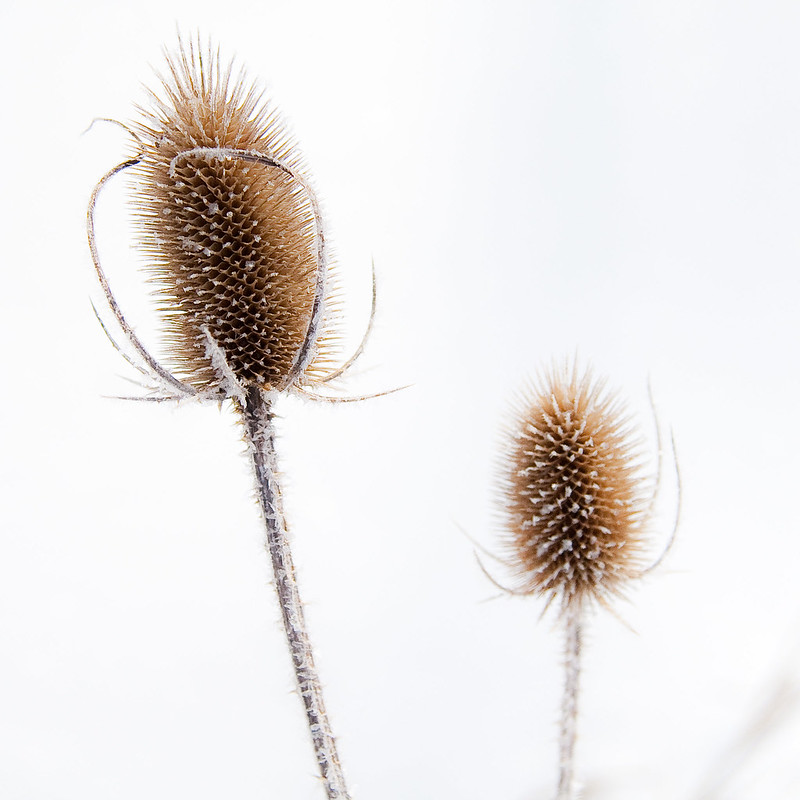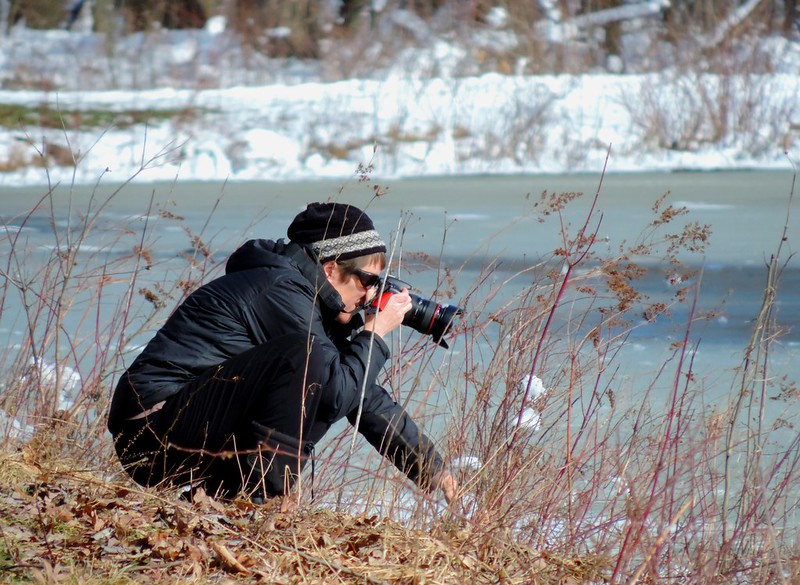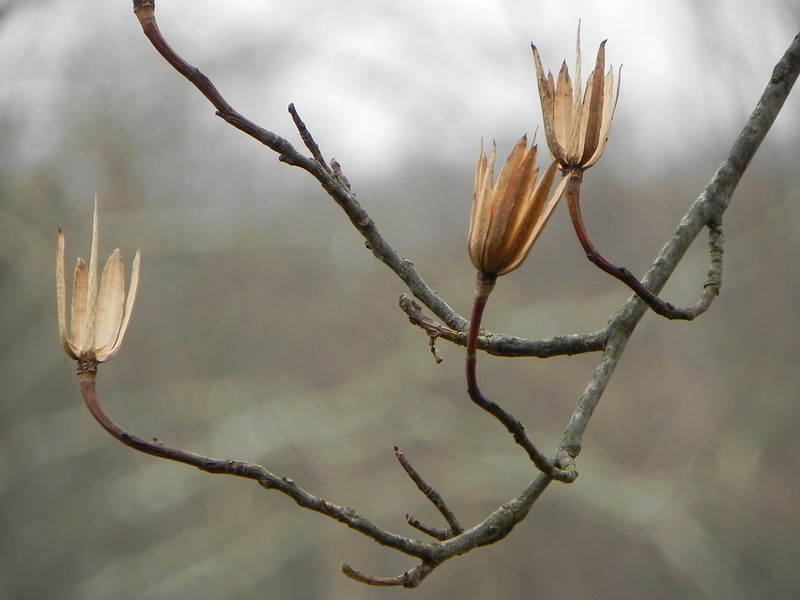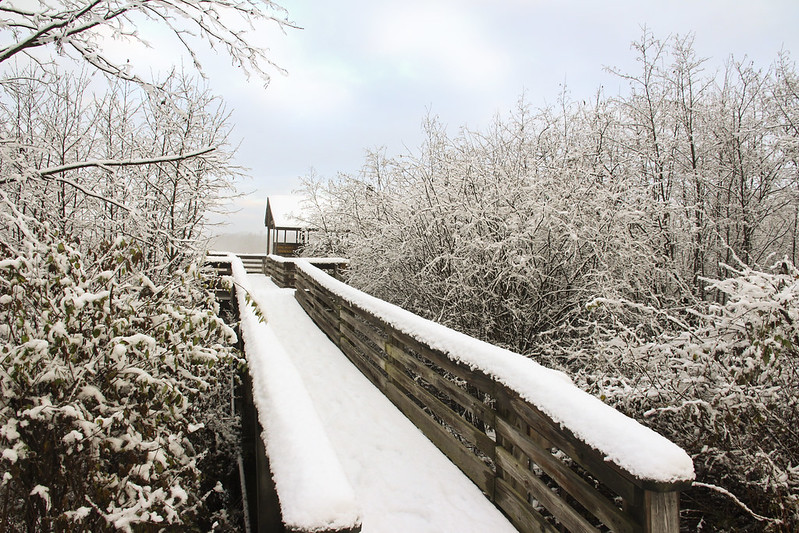This is a revealing time of year. Without the leaves on many of the trees and shrubs, sightlines are longer, that which is hidden forms shadowy outlines and lurking forms. Sometimes it is downed tree, with roots now reaching toward the sky. Other times is a gnarled apple tree, the last of its grove, encased by young-growth forest. Their presence is seasonal, only visible in the bare months like winter apparitions.
Thinking about what is left this time of year, I imagine we are looking at the skeletal structure of forests, fields, and marshes. Some of the plants are indeed dead, the annuals who have set their seeds laden with hope into the surrounding wilderness. Others are simply dormant, waiting for the energizing sun to return and revive sleeping cells. These winter skeletons are stark and simple, carrying a muted palette and air of melancholy. They are also gorgeous in their form, most especially when set on a backdrop of crystal snow or outlined with shards of frost.

It is an excellent time of year for winter nature study. Many plant skeletons are unmistakable by their seedpods, branching, or remaining leaves. Queen Anne’s Lace, Sensitive Ferns, Cattails, Tulip Trees, Red Osier Dogwood, and American Beech leap to mind. Teasel is heavy at the top, with its forbidding look, standing stately amid bowing rushes and kneeling grass. It looks like no other, and with identification so easy, it takes its place in many a winter bouquet. The common teasel is related to a species once used to process wool, though upon tactile investigation you’ll find the aggressive looking spikes full of bluster; the spines are rather soft in comparison to what one imagines them to be.
Balancing the strong stance of the teasel is the goldenrod, at this point in the year arched gently toward the ground, with some remaining fluffy seed that are reluctant to leave the mother plant. Goldenrod appears soft, the delicately curved flowers that were autumn’s fireworks now white, beige, and tan with seed parachutes providing a winter “coat.” Conspicuous this time of year are the galls that grace the stems of the goldenrod. Whether round (ball), elongated (elliptical), or bunched up (bunch), these galls are the fortresses for the insect larvae of fly, moth, or midge that are sleeping deeply within.

Queen Anne’s Lace is a beauty in every season, its snowflake form taking a variety of art forms through the year. In late fall and winter, the flower head of Queen Anne’s Lace may resemble a bird’s nest if the seeds still hold tight. After the seeds let loose, it is as if someone took each spoke and folded it up to form a vase. From the top, it resembles a cluster of stars. Turned upside down, a wizard’s hat.
In winter’s light, Staghorn Sumac is a blaze of crimson. The seed clusters are fiery turrets on the tips of velvet branches. Often considered a junk tree, these seeds are the salvation of early spring migrant birds, especially robins. Bluebirds, woodpeckers, sparrows, starlings, chickadees, and others flock to these trees to find not just the seeds, but the insect buffet inside.

Tulip Tree certainly attention this time of year, its little tulip candelabras poised festively on the tips of branches. With graceful branches, pyramid shape, and ambitious reach to the sky, this tree is a dazzling winter specimen. Tulip Tree is the traditional tree used for canoes, one log, hollowed out, served Daniel Boone and his family. Lightweight, light colored, and light mannered, this was the favored wood for lining wells, making food crates and boxes, and building houses. Dazzling history as well as looks.
Red Osier Dogwood has its greatest impact in numbers and from a distance. As if one took a paint brush of cranberry-burgundy and swiped it across a landscape, so does Red Osier Dogwood enhance the landscape. Loving the mucky edges of wetlands, its plain spires of red work together to create both habitat and wetland aesthetic. No swampland is complete without its swaths of red, and many a hiker and hunter is grateful for the indicator ahead of time for the potential of wet feet.
There are more, hundreds more. Walking around it is easy to get melancholy with the landscape. But in these sparse days, the structure of the world becomes visible. The shapes of trees, both generally and individually, is a topic that could occupy a hundred hikes. Certain trees, because of their shape, become old friends, waymarks, and companions. Look around this winter and see what can see that normally you can’t. Follow those winter apparitions into the woods and fields and discover the very bones that create your favorite places.
Audubon Community Nature Center builds and nurtures connections between people and nature. ACNC is located just east of Route 62 between Warren and Jamestown. The trails are open from dawn to dusk as is Liberty, the Bald Eagle. The Nature Center is open from 10 a.m. until 4:30 p.m. daily except Sunday when it opens at 1 p.m. More information can be found online at auduboncnc.org or by calling (716) 569-2345.
Sarah Hatfield is Education Coordinator at ACNC.


Recent Comments